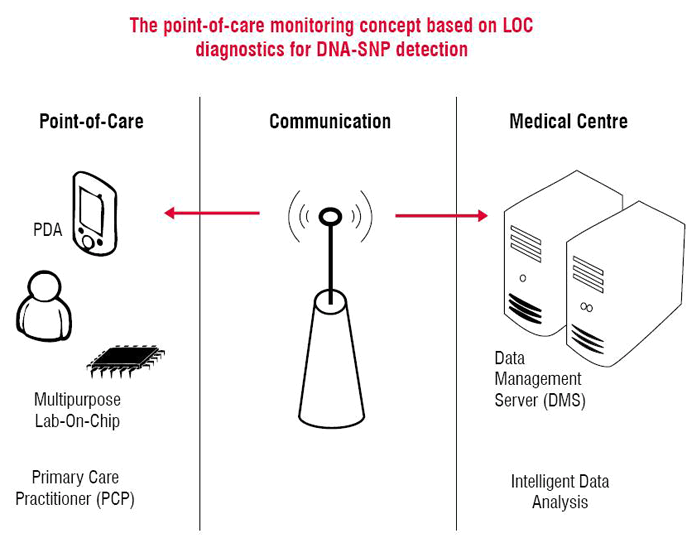As companies transition from young, start-up phase organisations to a more mature and successful stage, the needs and demands placed on the management teams from both internal and external sources change. These changes can have long-term consequences, whether they happen by strategic design or circumstance. The key element for growing companies is vertical integration.
In the biotechnology world, starting a new venture is fraught with a mixture of excitement and anxiety. Using a new technology or drugs platform that has yet to prove itself in the clinic and the marketplace can be one of life’s greatest adventures for scientists and entrepreneurs.
As companies transition from that initial phase and with some success, move on to a more mature organisation, the need to carefully manage growth and product commercialisation becomes the paramount objective.
The primacy of place for the preclinical organisation is supplanted by the need for growth in other parts of the organisation—clinical, regulatory, CMC (Chemistry, Manufacturing and Control) and commercial groups. As the needs of the organisation change, Research must change as well. It no longer needs to prove the worth of an approach or platform, rather it must now provide a sustainable flow of new drugs to meet commercial expectations (e.g. in the US this means Wall Street). How the company approaches this challenge ultimately determines the success of the enterprise.
Without a flow of competitive new products, the company’s commercial value diminishes and a likely merger or acquisition will be, most often, the only exit strategy. Thus, building an organisation that can be self-sustaining is of paramount importance and never more so than at the level of preclinical discovery.

Achieving vertical integration
Over most of the last century, the response was for Research to grow apace with all other areas of the company. This often led to large and expensive research organisations, which often experienced a paralysing disruption to research programmes due to constant mergers and acquisitions. The result today is that biotechnology companies are seen as far more nimble, original and creative than their much larger competitors. Knowing this, what should a big biotechnology company do?
Big here refers to companies with market capitalisations greater than US$ 10 billion and are fully integrated. Fully integrated implies a vertical integration that allows all the activities from drug discovery and development through to registration to take place within the company.
Each of the big biotechnology companies has taken a slightly different approach to this challenge and in some cases has eliminated preclinical discovery entirely. The remainder tend towards highly focussed preclinical research teams that take calculated risks, use academic centres (i.e. Universities and Research Institutes) to bolster their understanding of fundamental biological and disease processes as well as take advantage of the growing expertise of Contract Research Organisations (CROs) to help carry out research programmes.
The half dozen or so of the large biotechs which have large market capitalisations also engage in company to company based collaborations to fill gaps in their discovery and development pipelines; similar to what is done by Big Pharma.
A recent development has been the increased role of translational science and medicine, which can bridge the gap between the laboratory bench and the clinic by providing essential information concerning biomarkers, defining cohorts of potentially responsive patients, and providing early clinical feedback on the effectiveness of drugs or biologics against their molecular target.
One approach to expand the reach of the preclinical research organisation is to use outside CROs in such a way as to constitute a virtual discovery platform that takes advantage of their various scientific platforms to perform much of the work needed to advance a programme to lead optimisation. Adjunctive to this approach are alliances with universities and private research institutes that provide fundamental information on potential new targets or new research directions. Both approaches allow the internal organisation to focus its attention on the critical late stage of lead optimisation and drug candidate selection without having to use its precious resources on multiple early programmes. Rather, it can pick and choose among these for the programme that is judged to have the best chance of success in moving into clinical evaluation.
Optimising through vertical integration
Thus, a fully vertically integrated big biotechnology company has its preclinical discovery research take full advantage of a variety of approaches and tools to advance drug candidates.
It is linked to its clinical development research group via its translational science and medicine team. Integrating all of this requires the highest level of competence in bioinformatics and information technology (Figure 1). The IT group is the glue that allows the best integration of information and the greatest capacity for data mining.
The maintenance of a culture of originality and risk-taking at the level of discovery research requires a continued commitment not only by the research scientists but also by the management team that supports it. It also requires a vigilance on the part of supervisors and managers at all levels to encourage individual initiative within the framework of the goals and visions of the company. At the end of the day, proof of success is most easily measured by the productivity of the research organisation in terms of NCEs that move forward through the pipeline to ultimate approval.